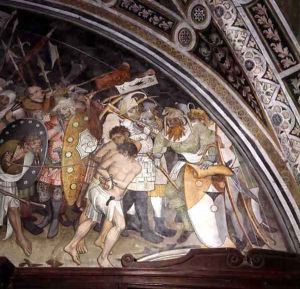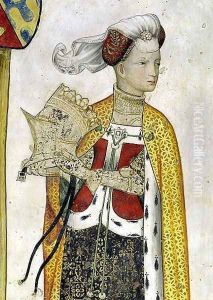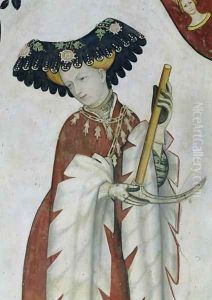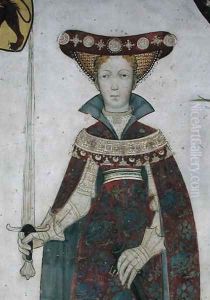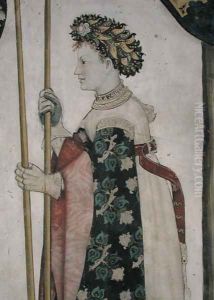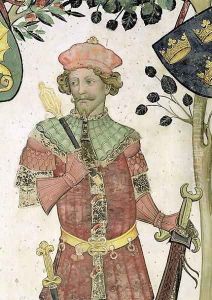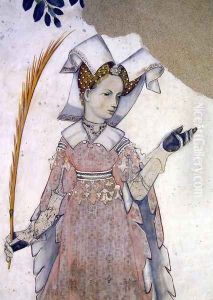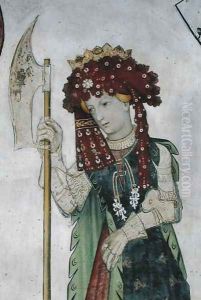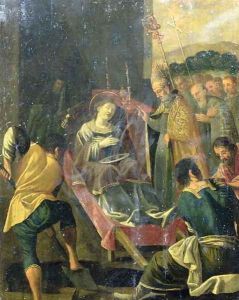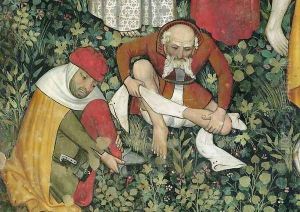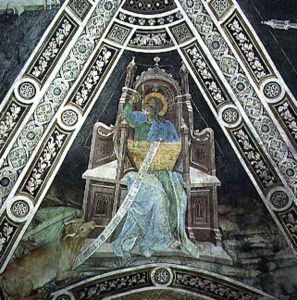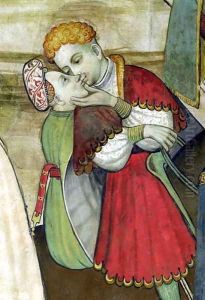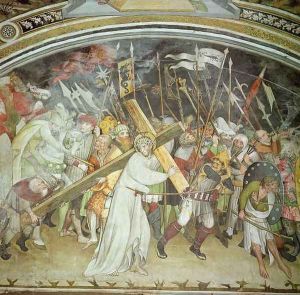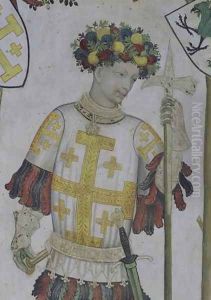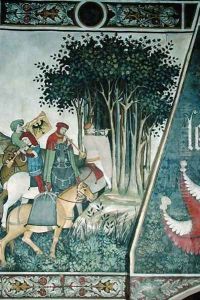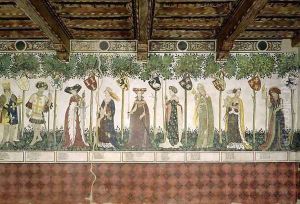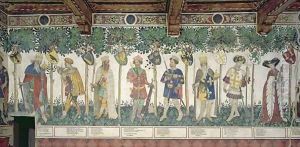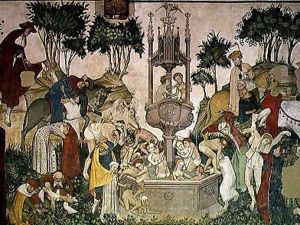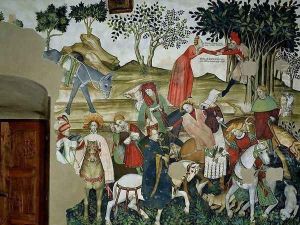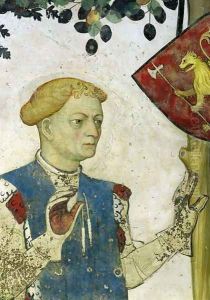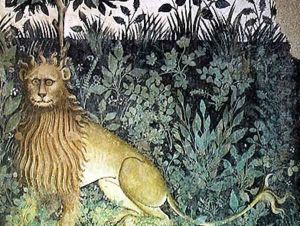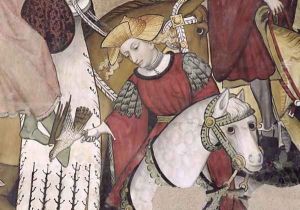Giacomo Jaquerio Paintings
Giacomo Jaquerio was an influential Gothic painter and miniaturist active during the late 14th and early 15th century in the Piedmont region of Italy. Born around 1375, Jaquerio is often considered one of the most important exponents of the International Gothic style in Northern Italy. His work is characterized by its detailed and refined decoration, as well as its courtly and chivalric subjects, which were common among the European aristocracy of the time.
Jaquerio's early life and training are not well-documented, but it is believed he was born in Turin and later worked primarily in the court of Amedeo VIII of Savoy. This association allowed him to work on a variety of projects, including frescoes, panel paintings, and manuscript illuminations. Among his most famous works are the frescoes in the Castle of Manta near Saluzzo, which depict scenes from the Fountain of Youth and the Nine Worthies, showcasing his skill in creating complex narrative scenes.
Jaquerio was also active in church commissions, where he painted religious scenes with the same attention to detail and ornamental richness. His style evolved over time, showing the influence of contemporary Flemish and Burgundian art, which was marked by a heightened naturalism and attention to detail.
Despite his prominence during his lifetime, many of Jaquerio's works have been lost or damaged over time, making the full extent of his oeuvre difficult to assess. However, the surviving pieces attest to his ability to blend the ornate Gothic style with a growing interest in naturalism, which would later become a hallmark of the Renaissance.
Jaquerio's exact date of death is not known, but he is believed to have died around 1453. His legacy lived on in the Piedmont region, influencing subsequent generations of artists, and today he is celebrated for his contribution to the transition from Gothic to Renaissance art in Northern Italy.
